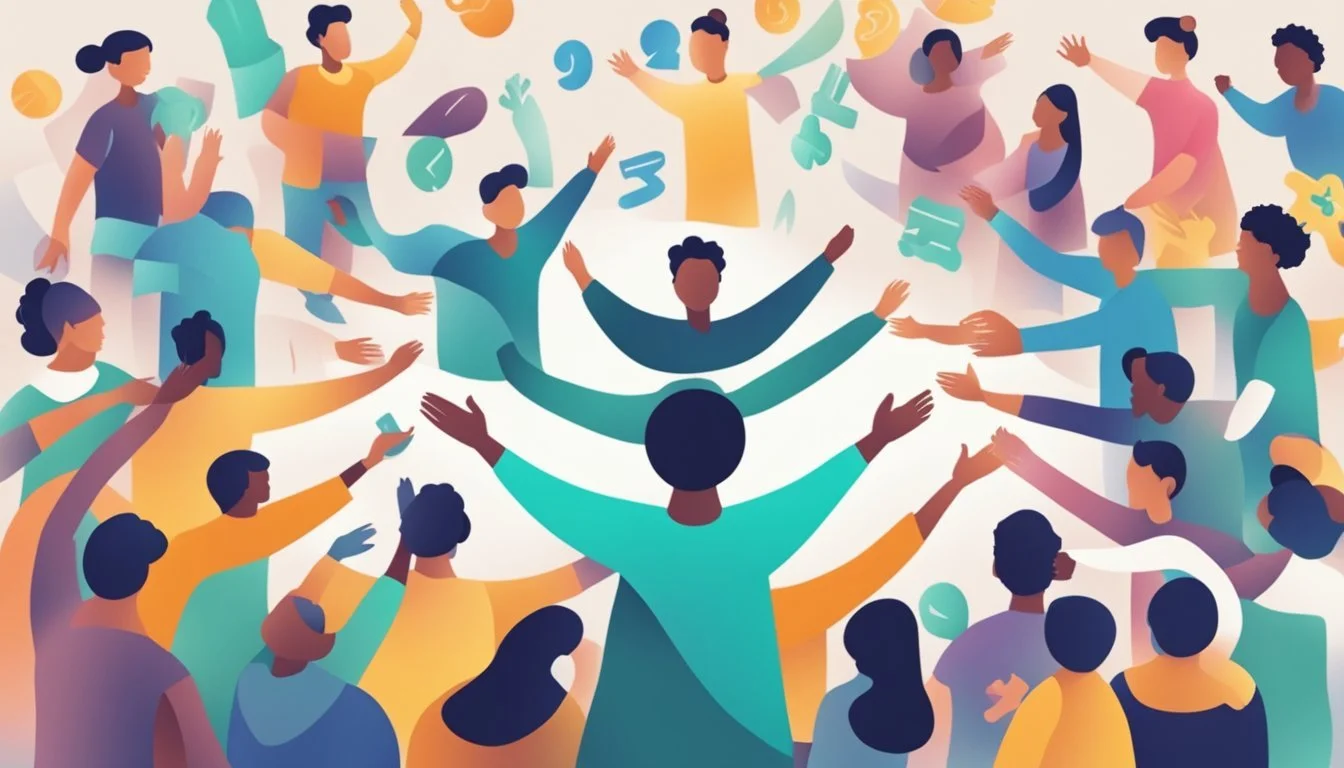When Mental Health Month Arrives, How Can You Make a Difference?
Mental Health Month occurs each May, serving as a crucial period to spotlight the importance of mental well-being. Since 1949, this annual observance has played a pivotal role in educating the public about mental health conditions and promoting strategies for wellness. The month-long campaign aims to raise awareness, reduce stigma, and encourage people to seek help when needed.
Throughout May, organizations like the National Alliance on Mental Illness (NAMI) and Mental Health America lead initiatives to foster understanding and support for those affected by mental health issues. These efforts include educational events, social media campaigns, and community outreach programs. The focus extends beyond awareness to actionable steps individuals can take to improve their mental health and support others.
Mental Health Month also highlights the prevalence of mental health conditions, with statistics showing that millions of Americans experience challenges such as depression, anxiety, and bipolar disorder. By bringing these issues to the forefront, the campaign helps create a more supportive and informed society, emphasizing that mental health is an essential component of overall well-being.
The Importance of Mental Health Awareness Month
Mental Health Awareness Month plays a crucial role in educating the public and reducing stigma around mental health issues. It provides a platform for raising awareness, promoting understanding, and encouraging support for those affected by mental illness.
Historical Background of MHAM
Mental Health Awareness Month (MHAM) was established in 1949 by Mental Health America. This initiative aimed to address the growing need for public education about mental health conditions and their impact on individuals and society.
Since its inception, MHAM has evolved to become a nationwide effort observed each May. Organizations like the National Alliance on Mental Illness (NAMI) and the National Institute of Mental Health have joined in promoting this important campaign.
Over the years, MHAM has expanded its focus to include various aspects of mental health, from prevention and early intervention to treatment and recovery.
Goals and Objectives
The primary goals of Mental Health Awareness Month are to educate the public about mental illnesses and reduce the stigma associated with them. This includes raising awareness about common conditions such as depression, anxiety, and bipolar disorder.
MHAM aims to:
Promote understanding of mental health as an essential component of overall well-being
Highlight the importance of early detection and treatment
Encourage people to seek help when needed
Advocate for improved access to mental health services
Through events like NAMIWalks and social media campaigns using #MentalHealthMonth, MHAM fosters community engagement and support. It also serves as a platform for sharing resources on prevention, treatment, and recovery strategies.
Identifying and Understanding Mental Health Conditions
Mental health conditions affect millions of people worldwide. Recognizing symptoms and obtaining proper diagnosis are crucial steps in seeking appropriate treatment and support.
Common Symptoms and Signs
Mental health conditions can manifest through various symptoms. Depression often involves persistent sadness, loss of interest in activities, and changes in sleep or appetite. Anxiety may cause excessive worry, restlessness, and physical symptoms like rapid heartbeat.
Bipolar disorder alternates between manic and depressive episodes. Schizophrenia can involve hallucinations, delusions, and disorganized thinking. Many conditions share overlapping symptoms, such as difficulty concentrating or changes in energy levels.
Physical signs may include unexplained aches, digestive issues, or frequent headaches. Behavioral changes like social withdrawal, mood swings, or substance abuse can also indicate underlying mental health concerns.
Challenges in Recognition and Diagnosis
Identifying mental health conditions can be complex. Symptoms may develop gradually or fluctuate over time. Cultural factors and personal beliefs can influence how individuals perceive and express their experiences.
Some people may not recognize their symptoms as part of a mental health condition. Stigma and fear of judgment can prevent individuals from seeking help. This delay in treatment can lead to worsening symptoms and increased distress.
Healthcare providers face challenges in differentiating between similar conditions. Accurate diagnosis often requires comprehensive evaluation, including medical history, psychological assessments, and sometimes neurological tests.
Coexisting conditions, such as substance use disorders, can complicate diagnosis. Continuous monitoring and open communication between patients and healthcare providers are essential for effective treatment and management of mental health conditions.
Support and Resources
Mental health resources provide vital assistance for those facing challenges. Many organizations offer helplines, support groups, and educational programs to aid individuals and families.
Family and Caregiver Support
NAMI offers several programs tailored for families and caregivers. NAMI Basics educates parents of children with mental health conditions. NAMI Family-to-Family provides information and coping strategies for adult family members.
NAMI Homefront supports military and veteran families. These programs connect participants with others facing similar challenges, reducing isolation and fostering community.
Local NAMI chapters often host support groups where families can share experiences and advice. Many groups now offer virtual options for increased accessibility.
Emergency and Crisis Management
Crisis services are crucial for immediate mental health needs. The SAMHSA National Helpline (1-800-662-4357) offers 24/7 referrals to local treatment facilities and support groups.
The National Suicide Prevention Lifeline (988) provides free, confidential support to people in suicidal crisis or emotional distress. Trained counselors are available round-the-clock.
FindTreatment.gov helps locate nearby mental health and substance use treatment facilities. Users can filter results by services offered, payment options, and more.
For non-emergency situations, FindSupport.gov connects individuals to mental health resources and information on various conditions.
Preventative Measures and Mental Wellness Promotion
Mental health prevention and promotion strategies focus on proactive approaches to enhance well-being and reduce the risk of mental illness. These efforts encompass individual lifestyle choices and community-wide initiatives.
Lifestyle and Well-being
Regular exercise boosts mood and reduces stress. Aim for 30 minutes of moderate activity most days of the week. This can include brisk walking, cycling, or swimming.
Adequate sleep is crucial for mental health. Adults should strive for 7-9 hours nightly. Create a relaxing bedtime routine and maintain a consistent sleep schedule.
Healthy eating supports brain function and emotional balance. Include plenty of fruits, vegetables, whole grains, and lean proteins in your diet. Limit processed foods and excessive caffeine or alcohol intake.
Mindfulness practices like meditation or deep breathing exercises can reduce anxiety and improve focus. Start with just 5-10 minutes daily and gradually increase.
Community Programs and Initiatives
Many communities offer free mental health screenings at local health centers or during awareness events. These can help identify potential issues early.
Support groups provide a safe space for individuals to share experiences and coping strategies. Look for groups focused on specific concerns like anxiety, depression, or grief.
Mental health first aid courses teach people how to recognize signs of mental distress and offer initial support. These programs are often available through community centers or workplaces.
School-based programs that teach emotional intelligence and stress management skills can help build resilience in children and teens. Encourage local schools to implement such curricula.
Workplace wellness initiatives, such as stress management workshops or flexible work arrangements, can promote better mental health among employees.
Education and Advocacy
Education and advocacy form the backbone of Mental Health Awareness Month initiatives. These efforts aim to increase public understanding and drive policy changes to improve mental health support systems.
Public Awareness Campaigns
NIMH and NAMI lead influential public awareness campaigns during Mental Health Awareness Month. These organizations create and distribute educational materials on mental health conditions, treatment options, and support resources. Social media plays a crucial role, with hashtags like #MentalHealthAwareness trending in May.
NAMI's "In Our Own Voice" program features individuals sharing personal stories of mental health challenges and recovery. This peer-led initiative helps reduce stigma and encourages open conversations about mental health.
Best practices for awareness campaigns include using clear, accessible language and featuring diverse voices to represent various mental health experiences. Volunteer opportunities often arise during this month, allowing community members to participate in local events and outreach efforts.
Policy and Change Leadership
Mental Health Awareness Month serves as a catalyst for policy advocacy. Organizations push for legislation to improve mental health care access, increase funding for research, and strengthen support systems. Advocates meet with policymakers to discuss critical issues like insurance parity for mental health treatment and expanding community-based services.
The National Institute of Mental Health provides evidence-based research to inform policy decisions. This data helps legislators understand the scope of mental health challenges and the potential impact of proposed solutions.
Grassroots efforts play a vital role in driving change. Individuals and local groups organize letter-writing campaigns, attend town halls, and use social media to amplify their voices on mental health policy issues.
Special Considerations in Mental Health
Mental health issues can manifest differently in various populations. Youth mental health and addiction with co-occurring disorders require unique approaches and interventions.
Youth Mental Health
Young people face distinct mental health challenges. School-based programs play a crucial role in early identification and support. These initiatives often include education on emotional well-being and stress management techniques.
The Substance Abuse and Mental Health Services Administration (SAMHSA) provides resources for youth-focused interventions. Many schools now employ counselors trained in adolescent mental health.
Social media and cyberbullying have emerged as significant factors affecting youth mental health. Parents and educators must stay informed about these issues to provide adequate support.
Addiction and Dual Diagnosis
Addiction frequently co-occurs with other mental health disorders. This combination, known as dual diagnosis, requires specialized treatment approaches. Integrated care addresses both substance use and underlying mental health conditions simultaneously.
SAMHSA emphasizes the importance of comprehensive assessments for individuals seeking addiction treatment. These evaluations help identify co-occurring disorders that may complicate recovery.
Cognitive-behavioral therapy and medication-assisted treatment are common interventions for dual diagnosis. Support groups tailored to those with co-occurring disorders can provide valuable peer support.
Family involvement often plays a crucial role in successful treatment outcomes. Education about dual diagnosis helps families understand and support their loved ones effectively.
Taking Action and Seeking Help
Mental health awareness empowers individuals to take proactive steps and access support. Engaging in advocacy efforts and connecting with professional resources can make a significant difference.
How to Get Involved
Participate in #MentalHealthMonth events to raise awareness. Share personal experiences or educational content on social media platforms. Volunteer with local mental health organizations to provide support to those in need.
Join advocacy groups to promote policy changes. Attend community workshops or webinars to learn about mental health issues. Organize fundraisers for mental health charities or research initiatives.
Encourage open conversations about mental health with friends and family. Support coworkers by creating a mentally healthy workplace environment. Wear green ribbons to show solidarity during Mental Health Awareness Month.
Finding Professional Help
Recognize signs of a mental health crisis and seek immediate assistance. Contact the NAMI Helpline for information and referrals. Use Findsupport.gov to locate nearby mental health services.
Visit Findtreatment.gov to search for treatment facilities. Consult primary care physicians for initial assessments and referrals. Research local therapists or counselors specializing in specific mental health concerns.
Consider teletherapy options for convenient access to mental health professionals. Explore support groups for individuals with similar experiences. Check insurance coverage for mental health services to understand available options.



